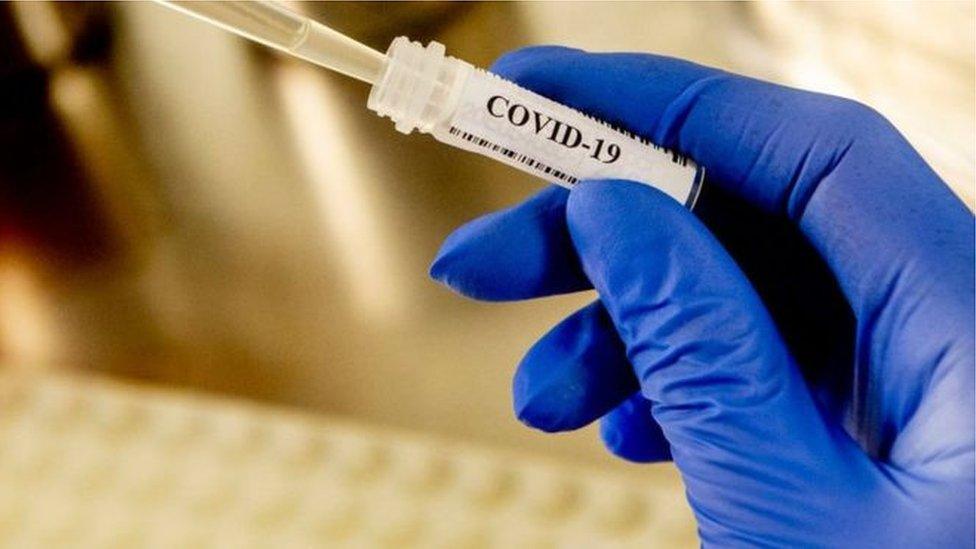Coronavirus: Wales' test times under the microscope
- Published
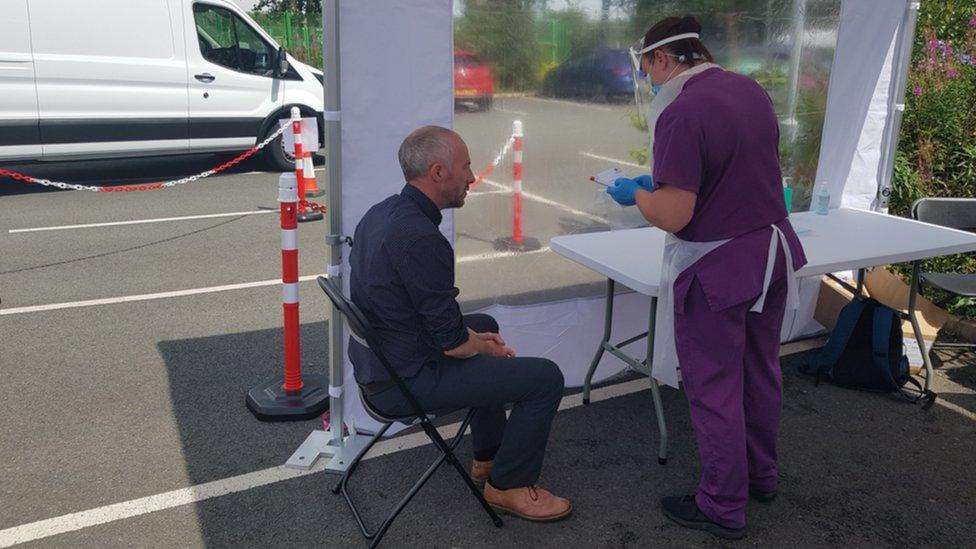
Community testing in Wrexham showed no widespread transmission of Covid-19, despite a spike in cases
Health officials and government ministers - both in Wales and UK-wide - have been clear on one thing during the coronavirus pandemic: Testing for the virus is important.
It is the key pillar in the efforts to track and trace those with Covid-19.
But just how well - or perhaps more importantly - how fast are those test results being turned around in Wales?
Last week, 56% of 18,000 tests taken to Welsh laboratories were being processed within a day.
More than half of the tests were part of the routine surveillance to check care home workers who might have the virus, but were not showing symptoms.
Just over a third of those results came back within 24 hours.
So-called on-demand tests, where swabs are taken at drive-through centres or community hubs, hit the 24-hour target in 70% of cases, while it was 88% for hospital-based tests.
Performance on these tests, unlike the care home tests, has been gradually improving over the past couple of months.
The Welsh Government said it wanted to increase the operating hours of Welsh laboratories as they are not open 24 hours a day.
It is also trying to speed up the transportation of samples and the time taken to process tests in the labs.
How fast should tests be processed?
The Welsh Government wants tests to be processed within 24 hours, but the statistics have consistently shown that in many cases it isn't happening.
Where are coronavirus test samples sent to be processed?
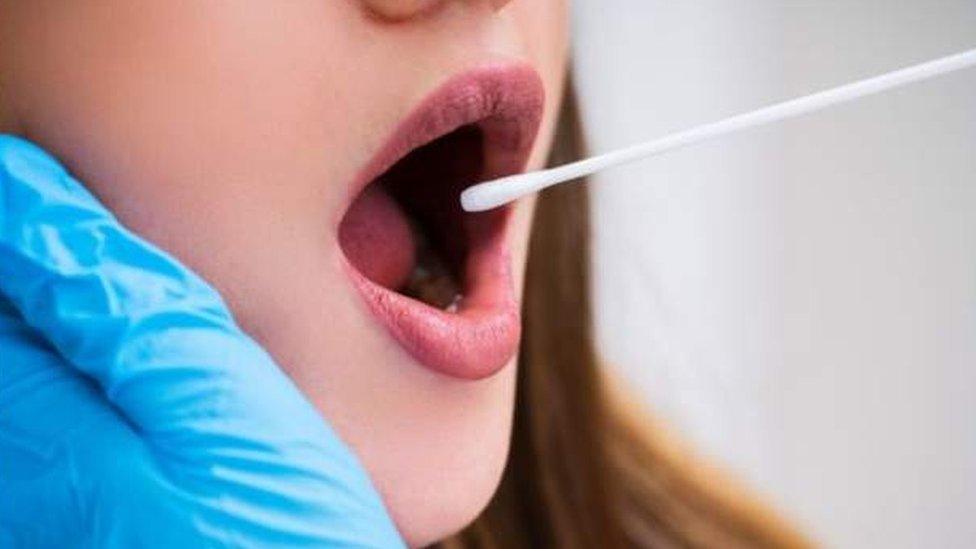
After the swab is taken, a sample is either sent to an NHS Wales laboratory or a Lighthouse Lab, a network of specialist covid laboratories in England and Scotland.
Wales has mainly been using the ones in Milton Keynes and Manchester, but a Lighthouse Lab is due to open in Newport soon.
So far, more than 440,000 tests have been carried out on people in Wales.
Most have been processed at NHS Wales labs, but nearly 150,000 have been processed in Lighthouse Labs.
How many are being turned around in 24 hours?
The statistics measure the time from a sample being collected, when someone has a swab taken, to the moment the result is confirmed in the lab and becomes available for contact tracing.
The length of time it takes for people to then be notified of their result is not recorded in the data.
Fifty per cent of the NHS Wales lab tests have been turned around in 24 hours, while it is 53% for the Lighthouse Labs.
However, a closer look at the figures shows there are big variations, depending on where the sample was taken.
For Lighthouse Labs, tests gathered at testing centres (the drive-through ones or smaller community test centres) are nearly always processed within 24 hours - 95% of more than 20,000 tests done this way met the target.
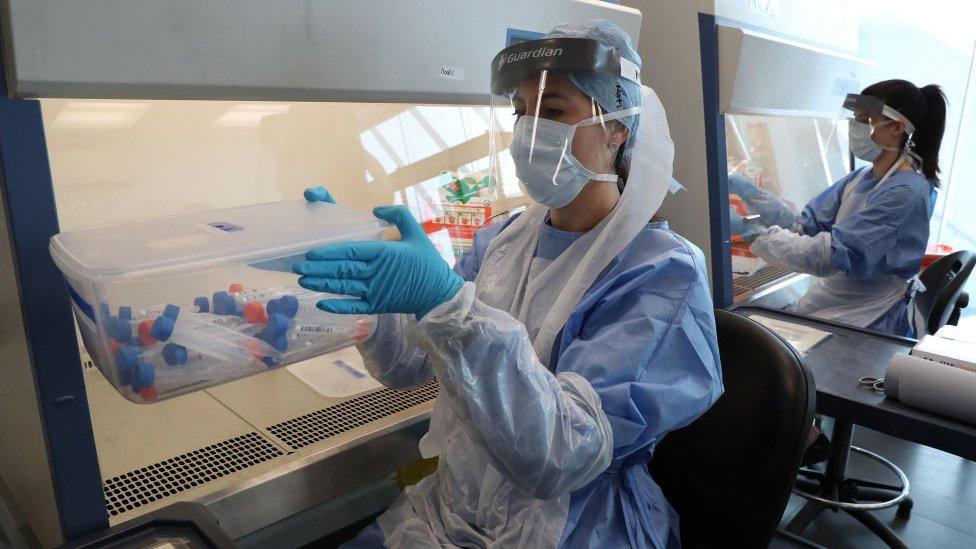
Where the Lighthouse Labs are slower is on tests done at home and tests ordered by care homes and sent in batches to the labs.
Home tests are slower because they are posted, rather than couriered, to the labs.
Care home tests are slower because they are sent in a batch once a certain number of staff have been tested.
First Minister Mark Drakeford feels the 24-hour measure is less important for these tests, because unlike those done at the testing centres and in hospitals, they are mainly of asymptomatic people and only a very small proportion are positive.
NHS Wales labs have appeared to be significantly slower at turning round results from the drive-through and community test centres.
Data up to last week showed only 42% of drive-through tests came back within 24 hours and just 39% of those from community testing units. In some weeks the figures have been as low as 25%.
However, the way the data was recorded meant many routine tests of asymptomatic care home workers were included in those figures.
Now government statisticians have separated out the routine care home tests.
This first week of new data shows that over the past seven weeks, NHS Wales labs have processed 56% of "on-demand" tests done at drive-through and community testing sites, and last week the figure was 70%.
Performance here is broadly improving but is still some way off the speed of the Lighthouse Labs.
How can the tests get quicker?
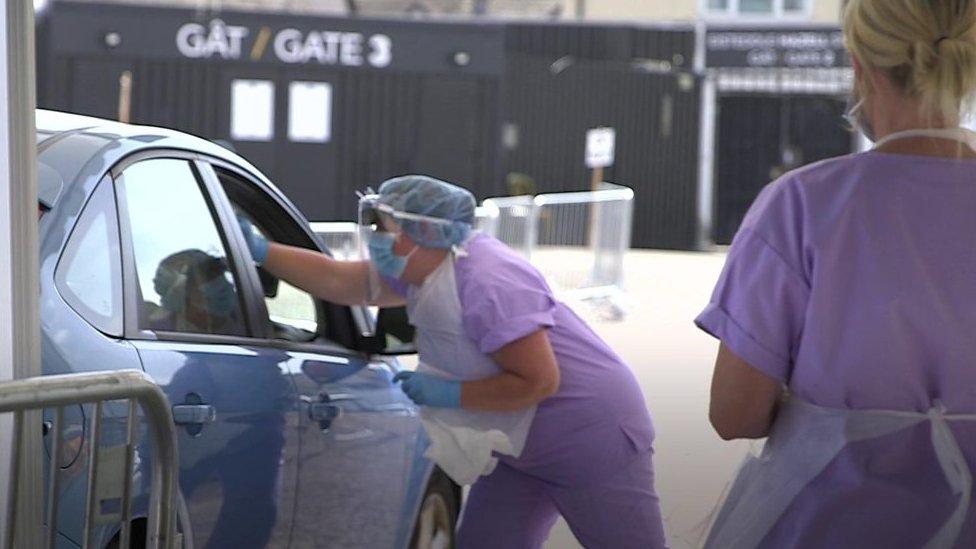
Tests are carried out in a number of different settings, including drive-through centres
Mr Drakeford said he wanted to "simplify and accelerate" the system.
Samples done at test centres are couriered to the labs and he number of courier collections has been increased, but there is still work being done to try to make the system more efficient.
The timing of sample delivery is being looked at because if lots of tests arrive at once, that creates a backlog.
Mr Drakeford previously pointed out that the way samples were time-stamped was problematic because even if a test arrives late in the day it is simply recorded as arriving on that calendar day, rather than the exact time it arrived, so has little chance of meeting the 24-hour target.
Are samples tested around the clock?
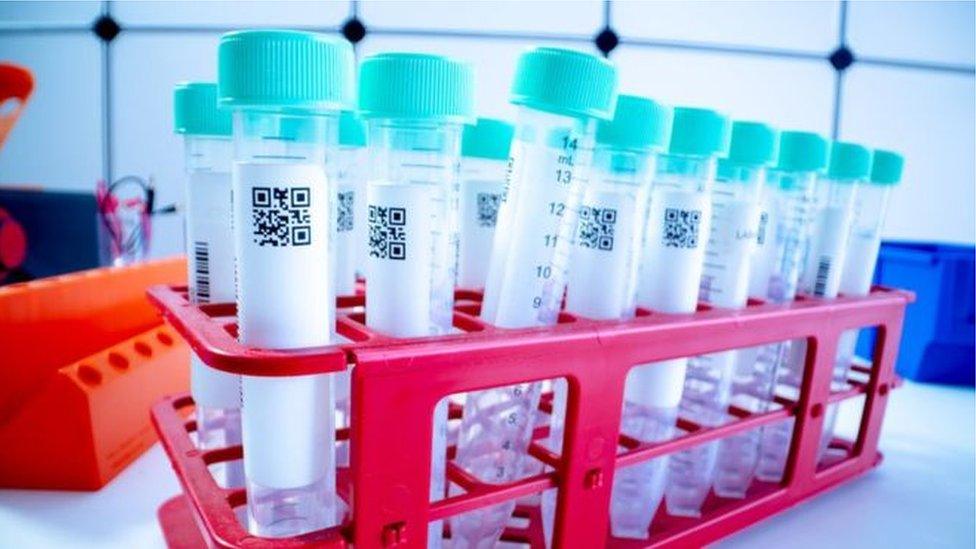
NHS Wales labs are not operational 24 hours a day
Government officials also want to improve machinery at the labs.
Unlike the Lighthouse Labs, NHS Wales labs are not operational 24 hours a day.
Recruitment and training may need to happen to move to a 24-hour operation to cope with any increase in cases in the winter.
During the recent outbreak in Wrexham, a regional lab in Rhyl was put onto a 24-hour operation. Mr Drakeford has said more than 95% of samples from the community testing programme in Wrexham were processed within 24 hours.
What are the opposition parties saying?
Welsh Conservative health spokesman Andrew RT Davies said the Welsh Government was "failing get a grip" on testing's key elements.
"Ramping up testing capacity and delivering significant improvements in turnaround times now has to be the priority for Vaughan Gething and the Welsh Labour government," he said.
Plaid Cymru health spokesman Rhun ap Iorwerth said the Welsh Government must speed up improvements, including in care homes and around local clusters.
This was "essential" to contain the virus and prevent a second wave, he said.
- Published28 May 2024

- Published26 November 2020

- Published4 August 2020

- Published15 July 2020
